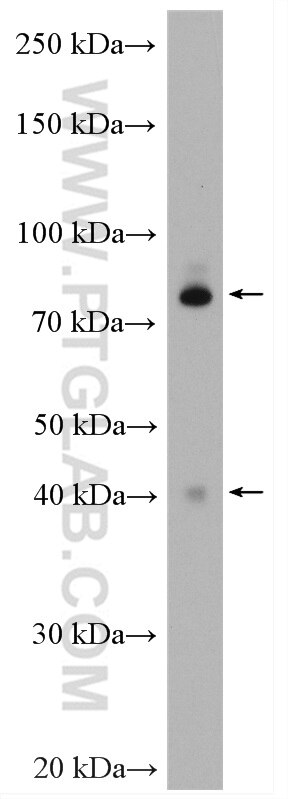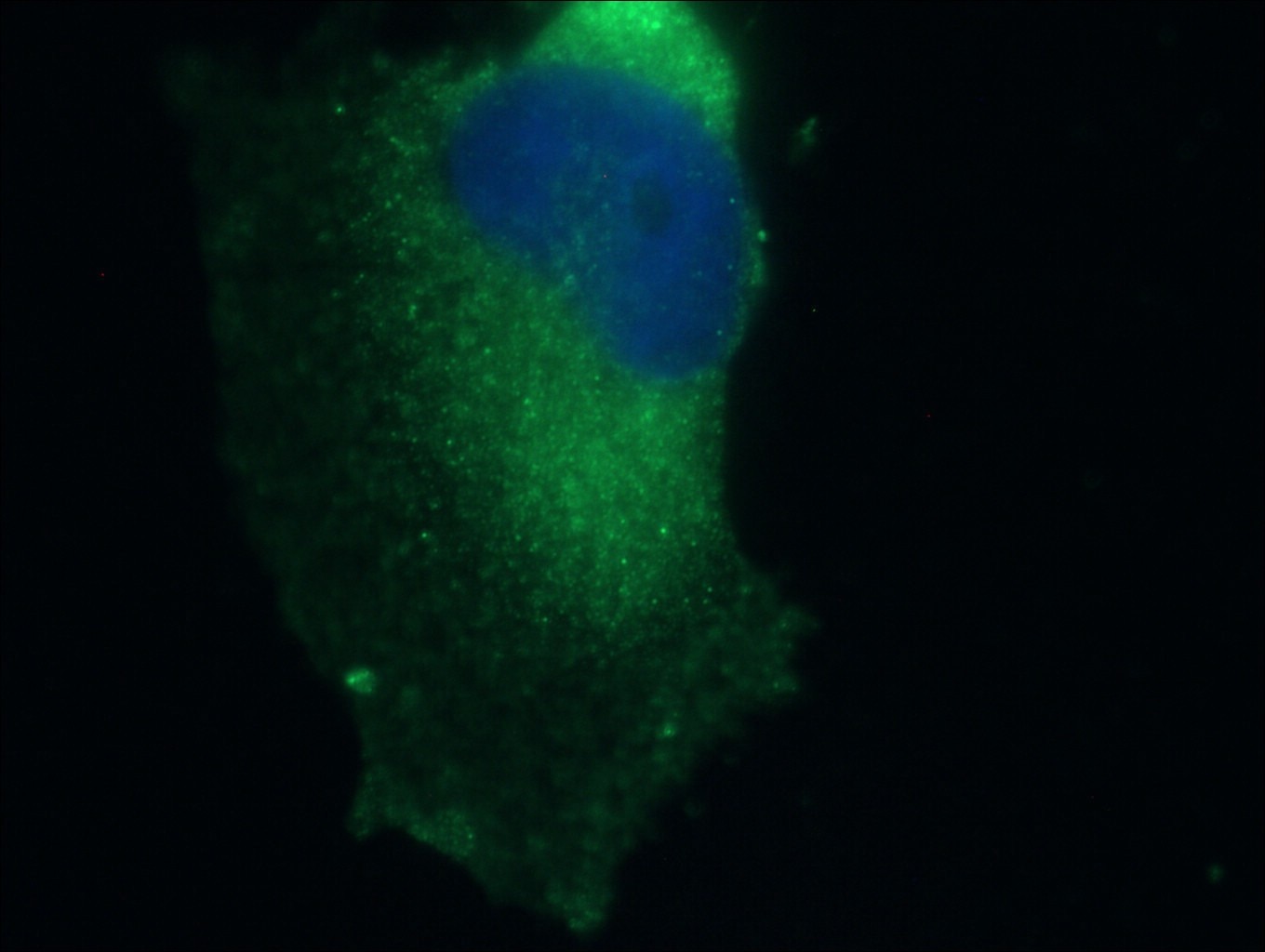Anticorps Polyclonal de lapin anti-CEP89, CCDC123
CEP89, CCDC123 Polyclonal Antibody for WB, IF, ELISA
Hôte / Isotype
Lapin / IgG
Réactivité testée
Humain, souris
Applications
WB, IF/ICC, ELISA
Conjugaison
Non conjugué
N° de cat : 24002-1-AP
Synonymes
Galerie de données de validation
Applications testées
| Résultats positifs en WB | cellules SH-SY5Y, cellules Neuro-2a |
| Résultats positifs en IF/ICC | cellules U-251, |
Dilution recommandée
| Application | Dilution |
|---|---|
| Western Blot (WB) | WB : 1:200-1:1000 |
| Immunofluorescence (IF)/ICC | IF/ICC : 1:50-1:500 |
| It is recommended that this reagent should be titrated in each testing system to obtain optimal results. | |
| Sample-dependent, check data in validation data gallery | |
Applications publiées
| WB | See 1 publications below |
| IF | See 3 publications below |
Informations sur le produit
24002-1-AP cible CEP89, CCDC123 dans les applications de WB, IF/ICC, ELISA et montre une réactivité avec des échantillons Humain, souris
| Réactivité | Humain, souris |
| Réactivité citée | Humain, souris |
| Hôte / Isotype | Lapin / IgG |
| Clonalité | Polyclonal |
| Type | Anticorps |
| Immunogène | CEP89, CCDC123 Protéine recombinante Ag21206 |
| Nom complet | coiled-coil domain containing 123 |
| Masse moléculaire calculée | 783 aa, 90 kDa |
| Poids moléculaire observé | 85-100 kDa, 40 kDa |
| Numéro d’acquisition GenBank | BC136328 |
| Symbole du gène | CEP89 |
| Identification du gène (NCBI) | 84902 |
| Conjugaison | Non conjugué |
| Forme | Liquide |
| Méthode de purification | Purification par affinité contre l'antigène |
| Tampon de stockage | PBS avec azoture de sodium à 0,02 % et glycérol à 50 % pH 7,3 |
| Conditions de stockage | Stocker à -20°C. Stable pendant un an après l'expédition. L'aliquotage n'est pas nécessaire pour le stockage à -20oC Les 20ul contiennent 0,1% de BSA. |
Informations générales
CCDC123(as known as CEP123), also named as CEP89, is a new player in the process of primary ciliogenesis and it also plays a role in mitochondrial metabolism where it may modulate complex IV activity. It has been shown that CEP123 is localized to the distal appendages of the mother centriolecep and the localization of CEP123 is cell cycle-dependent with its levels decreasing during mitosis. CEP123 depletion can cause defects in ciliary vesicle formationcep and prevent the formation of a ciliary vesicle at the distal end of the mother centriole. It is possible that CEP123 is involved in regulating the recruitment of membranes to the centrosome through its interaction with Cep290(PMID:23575228, 23789104, 23348840). 24002-1-AP antibody recognizes all of CEP123 isoforms.
Protocole
| Product Specific Protocols | |
|---|---|
| WB protocol for CEP89, CCDC123 antibody 24002-1-AP | Download protocol |
| IF protocol for CEP89, CCDC123 antibody 24002-1-AP | Download protocol |
| Standard Protocols | |
|---|---|
| Click here to view our Standard Protocols |
Publications
| Species | Application | Title |
|---|---|---|
Cell Res NudCL2 is an autophagy receptor that mediates selective autophagic degradation of CP110 at mother centrioles to promote ciliogenesis. | ||
Dev Cell The CEP19-RABL2 GTPase Complex Binds IFT-B to Initiate Intraflagellar Transport at the Ciliary Base. | ||
PLoS Biol The evolutionary conserved proteins CEP90, FOPNL, and OFD1 recruit centriolar distal appendage proteins to initiate their assembly |





